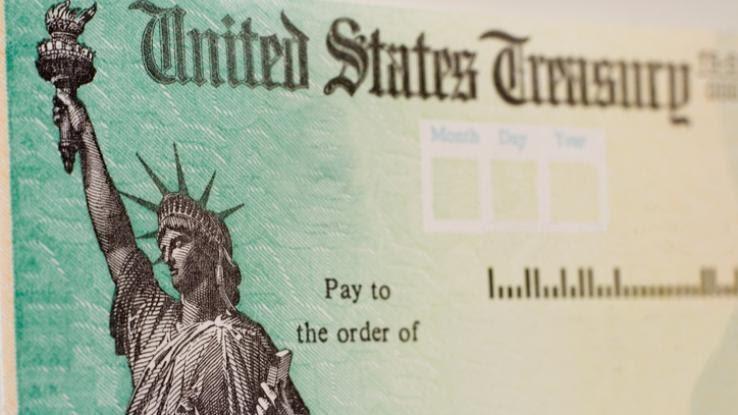
Looking to start investing for retirement? It’s never too early to begin, and these days there are plenty of ways to tuck away money for the future, from IRAs and 401(k)s to stocks and bonds. Before you decide where to put your money, though, it’s important to understand the wide variety of options you have and what each one can offer you.
Long-term investments are often solid choices when you’re planning for retirement — an event that might be decades away. They’re more stable and less risky, and they often hold a higher likelihood of earning money. If this sounds like a workable strategy to you, you might be considering purchasing Treasury bonds, which can be a good way to earn low-risk interest for funding your future. Before you decide to invest, take a look at treasury direct bonds, how they work and some of their pros and cons to help determine whether they’re the right choice for your financial situation.
What Are Treasury Bonds?

Each year at tax time, there are likely plenty of people who can’t help but wish that the government were in debt to them instead of the other way around. In a way, Treasury bonds (sometimes also known as T-bonds) can make this dream a reality. In essence, purchasing a bond is like lending money to the government, and the bond is the record of the money you’ve “lent.” The government uses the money people have spent to purchase bonds in various ways. After a period of time, it pays back that money, plus interest, to the purchasers.
Treasury bonds are debt securities issued by the U.S. government that can be purchased from the United States Department of the Treasury. These bonds tend to have long maturity dates, commonly ranging from 20 to 30 years. Once the bond matures, the buyer is repaid the amount of their bond in full. The perks of being a bond owner come in the form of semi-annual fixed-interest payments.
The other upside of purchasing treasury bonds is that they’re almost risk-free because they’re backed by the U.S. government. While they may not be ideal if you’re looking for a quick return on your investment, they’re certainly suitable if you’re looking to take the guesswork out of investing and don’t mind waiting several years to see returns on that investment.
How to Purchase Treasury Bonds

While you can purchase Treasury bonds from a bank or broker, one of the easiest ways to buy them is through Treasury Direct. The website allows you to purchase bonds directly from the U.S. Treasury, which can save you money by eliminating the fees and commissions associated with buying them through a broker or middleman.
Bonds are made available to purchase through auction, allowing investors to choose from either a competitive or noncompetitive bid. Competitive bids let you choose the interest rate that you’d like to receive if you invest in the bond, but your bid isn’t guaranteed to be accepted. Noncompetitive bids, on the other hand, guarantee that you’ll get the bond, but you’ll have to accept its set interest rate.
The minimum amount you can pay for a bond in a single auction is $100, while the maximum price is $5 million for non-competitive bids or 35% of the offering amount for competitive bids. Once you purchase a bond, you’ll also be able to use the Treasury Direct website to manage it.
While you always have the option of holding the bond until maturity, you can also choose to sell it earlier through a secondary market known as a bond market. One potential downside of selling early, however, is that you may or may not be able to make as much from your sale as you initially invested. You should also be aware that you’ll have to hold the bond for at least 45 days after purchase before selling it.
The Benefits of Bonds in Retirement Planning

While bonds are commonly held by investors of all ages, they tend to make up a larger part of the portfolios of people who are approaching or in retirement. One reason for this is the fact that they come with very little risk, which provides investors with a great way to save money for retirement with less of a chance of market volatility impacting the value of their investment.
Another plus comes in the form of the guaranteed semiannual income payments that bonds generate. By buying bonds with different maturity dates through a process known as laddering, it’s possible for retirees to enjoy a fixed monthly income even after they’re no longer working. Keep in mind that the average rate of return for bonds is around 5%.
There are even types of Treasury bonds known as Series I bonds or simply I bonds that offer two types of interest returns. I bonds offer both a fixed-yield and an inflation rate that’s adjusted periodically throughout the year, depending on changes in the Consumer Price Index. One important thing to keep in mind is that, unlike regular Treasury bonds, I bonds cannot be sold on the secondary market.
What Are Some Pros and Cons of Treasury Bonds?

Whether or not Treasury bonds are for you can depend on a variety of factors. Let’s break down a list of pros and cons you should consider. Advantages of purchasing these bonds include the following:
- Safety: You’re not likely to find a better debt issuer than the U.S. government. Because bonds are government-backed, they’re considered much more low-risk than other types of investments, such as stocks.
- Tax advantages: If you buy your bond directly from the government, you won’t be required to pay local or state taxes on it for as long as you hold it. If you choose to sell or buy a bond on the secondary market, however, this isn’t always the case. The interest earned on bonds is taxable at the federal level but typically not at the state or local level.
- Liquidity: Even though Treasury bonds can have maturity dates of up to 30 years, you’re also free to sell them at any time. Due to high demand, they tend to be quite easy to sell on the secondary market.
- Retirement benefits: Treasury bonds are an effective, low-risk way to save money for retirement and a solid way to achieve passive income after you stop working.
Disadvantages of Treasury bonds include the following:
- Low yields: While it’s nice to have a guaranteed return on your investment, Treasury bonds tend to offer fairly low returns in comparison to things like stocks or equities. This is why they tend to be a smaller part of the average younger investor’s portfolio.
- Inflation: Due to the length of time many Treasury bonds take to mature, your principal investment may no longer be worth as much as it was when you paid for it. For instance, according to the U.S. Inflation Calculator, $1,000,000 in 1991 would be worth $1,960,748.90 today due to the rising inflation of the U.S. dollar. Unfortunately, a T-bond doesn’t take inflation into account and would only pay you back the original $1,000,000 you had invested.
- Opportunity costs: This simply refers to the loss of opportunities you might have to earn more money from an alternative investment while your money is tied up in the bond.
While there are certain situations in which Treasury bonds can make great investments, you should always consider your options carefully. It can be helpful to discuss this and other strategies with a financial advisor who’s experienced with retirement planning before you decide where and how to invest.





